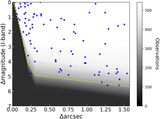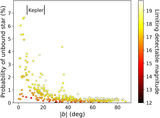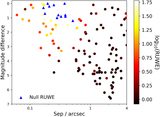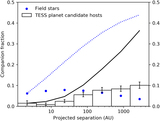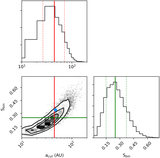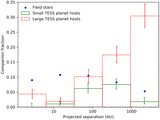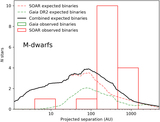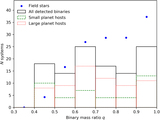Image Details
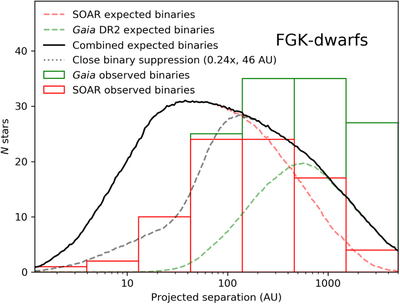
Caption: Figure 5.
In red and green are the number of observed companions from SOAR and Gaia DR2 for solar-type TESS planet candidate hosts in logarithmic bins of projected separation of 0.5 dex width. Companions found in both SOAR and Gaia are included in the SOAR sample. In black is the expected distribution from a multiplicity study of field stars (Raghavan et al. 2010), combining both field binaries that would be detected by SOAR and Gaia. The expected binaries from SOAR and Gaia are also plotted individually. These distributions take into account the detection sensitivity of both SOAR and Gaia. The observed distribution shows a clear paucity of TESS planet candidate host binaries at small projected separations compared to the field stars and the inverse at wide separations. A best-fit model for the close binary suppression applied to the expected distribution of binaries for field stars is also plotted. The best-fit model has binaries suppressed by a factor of 0.24 at physical separations less than 46 au.
Copyright and Terms & Conditions
© 2019. The American Astronomical Society. All rights reserved.



